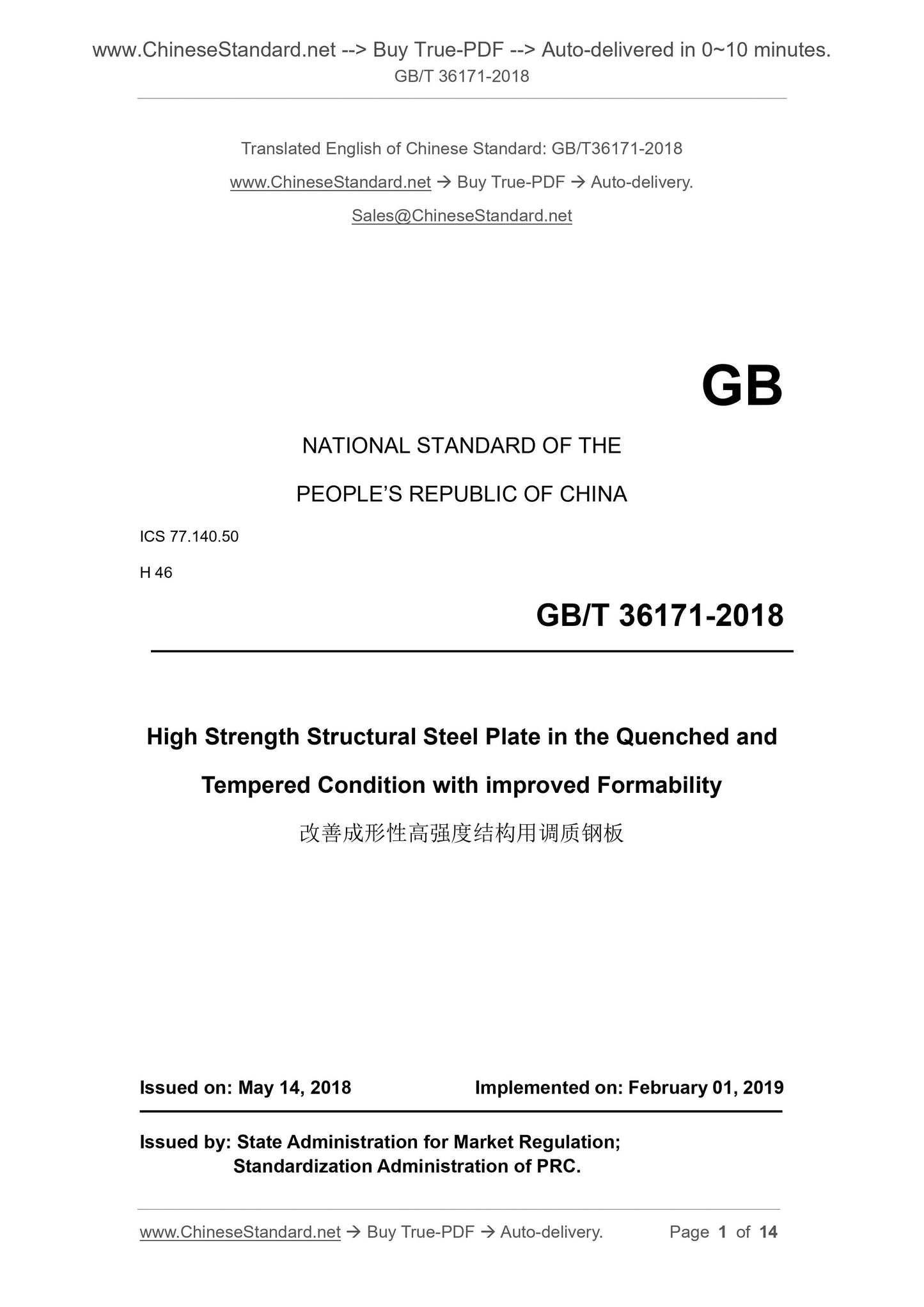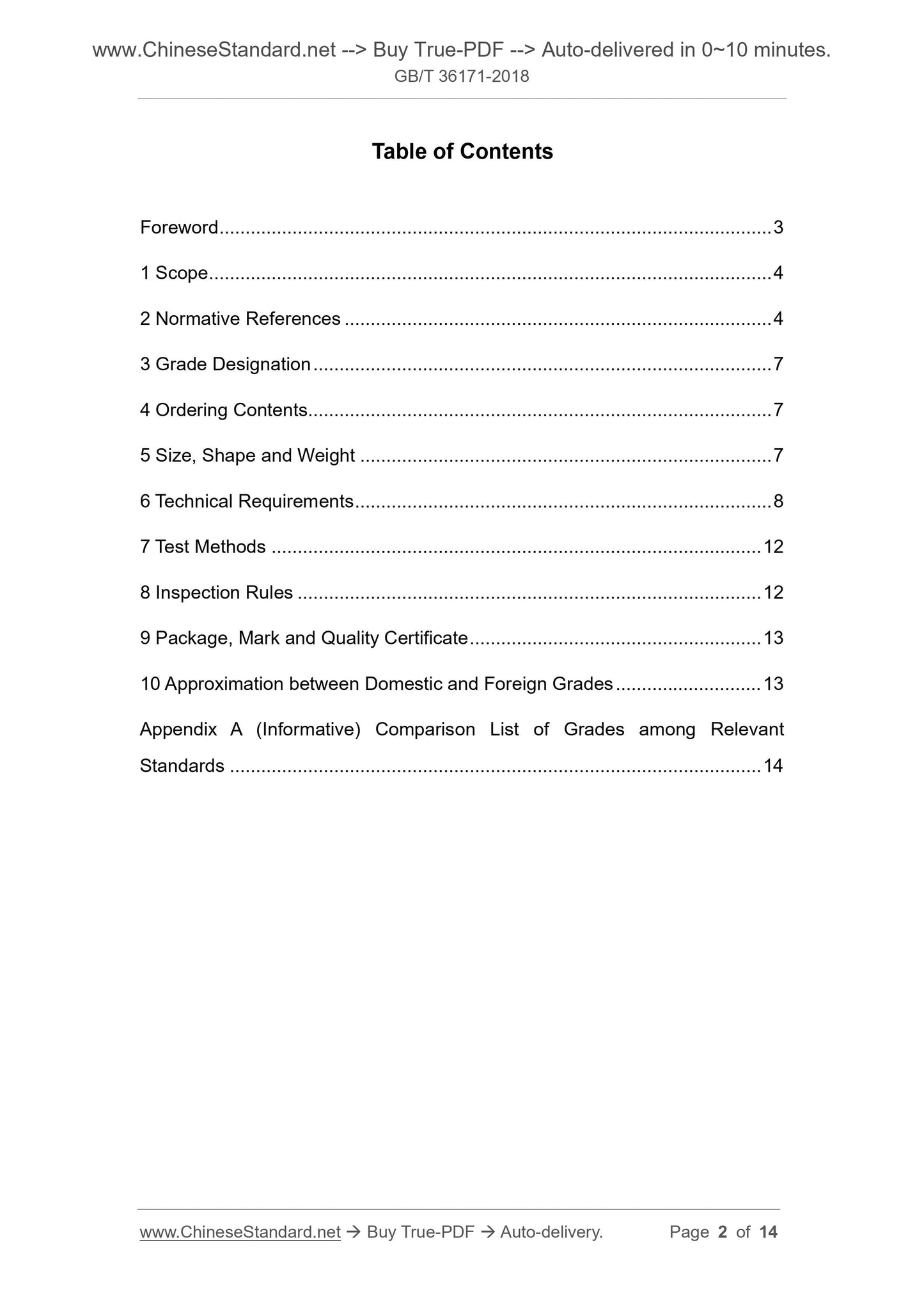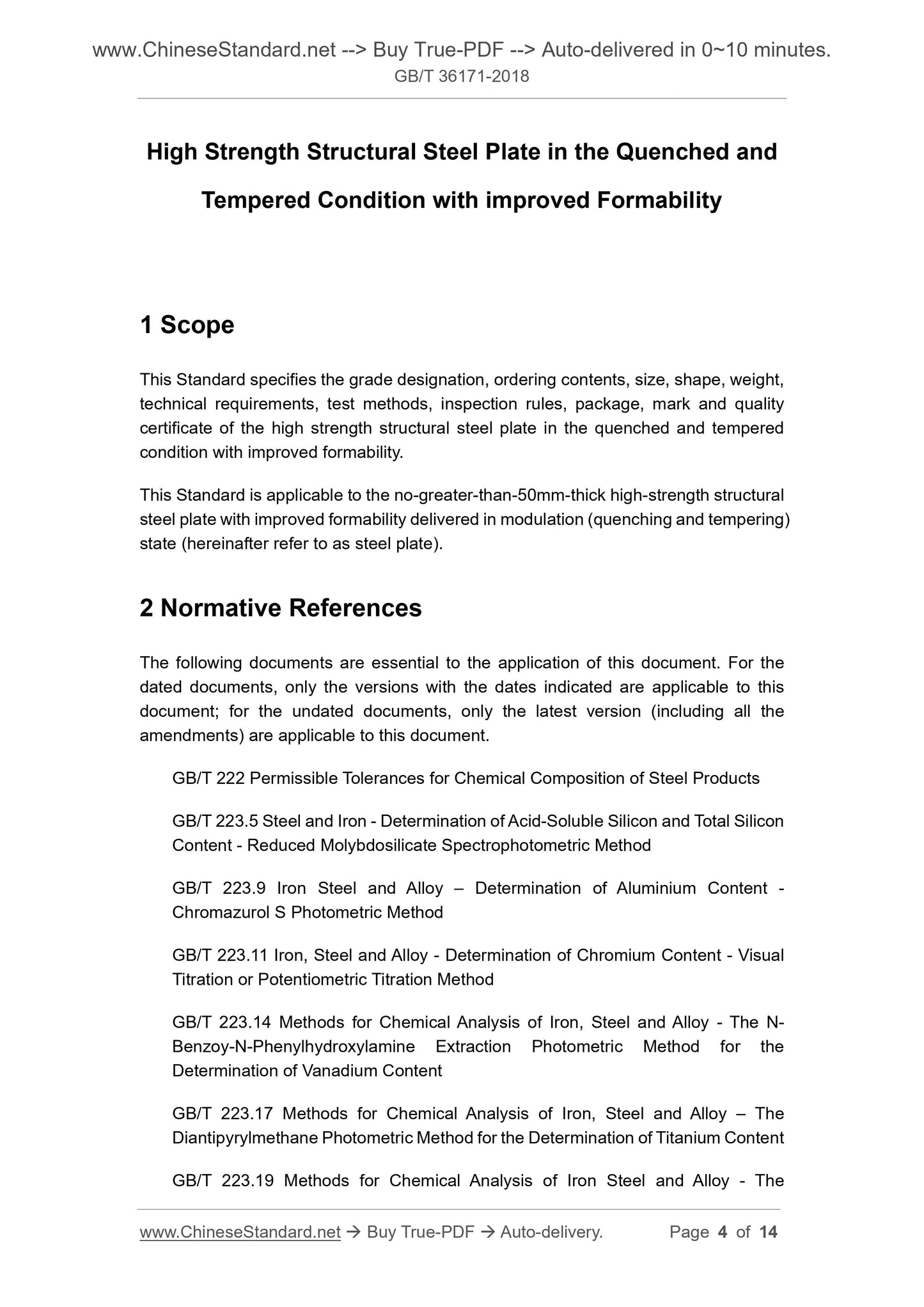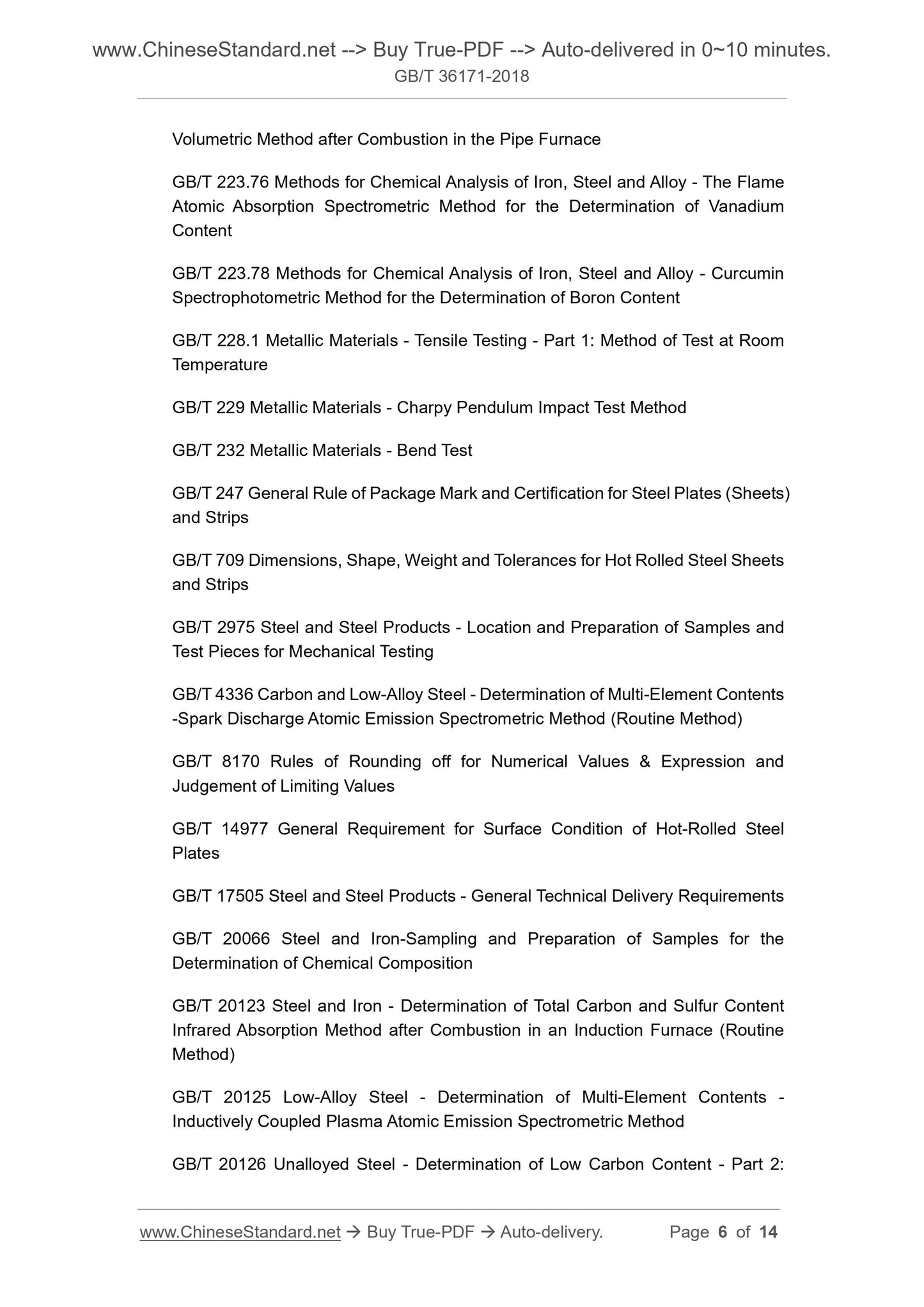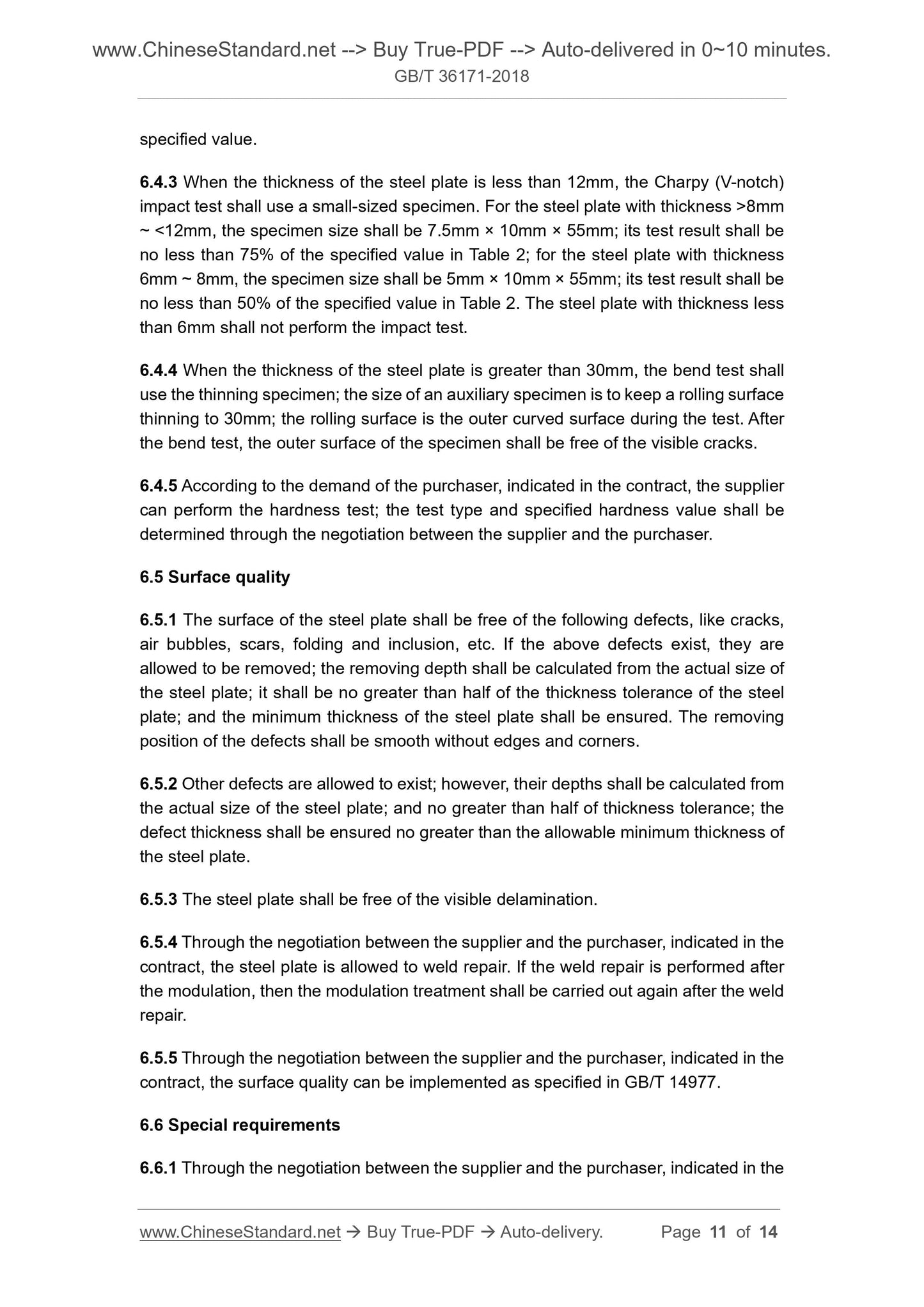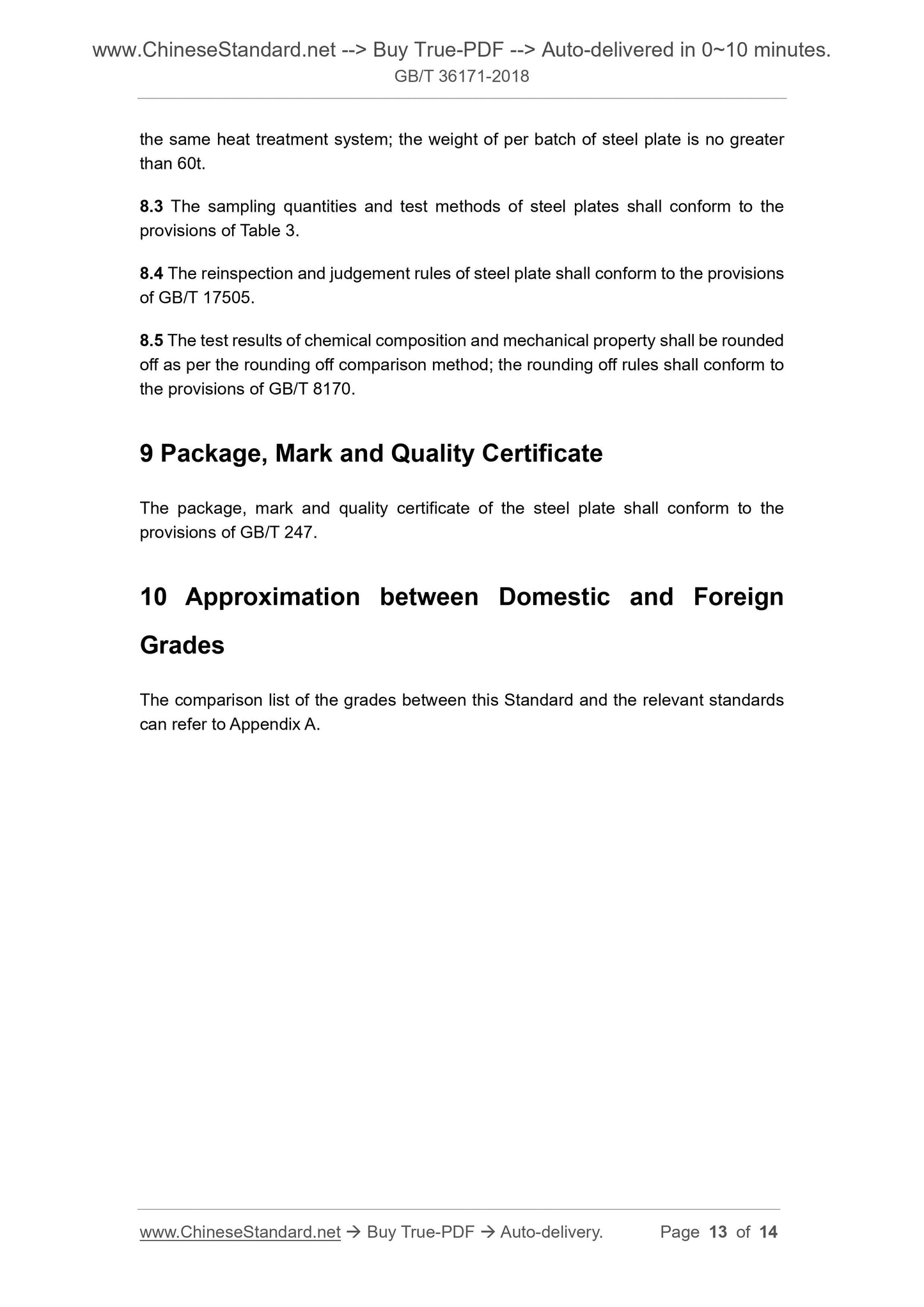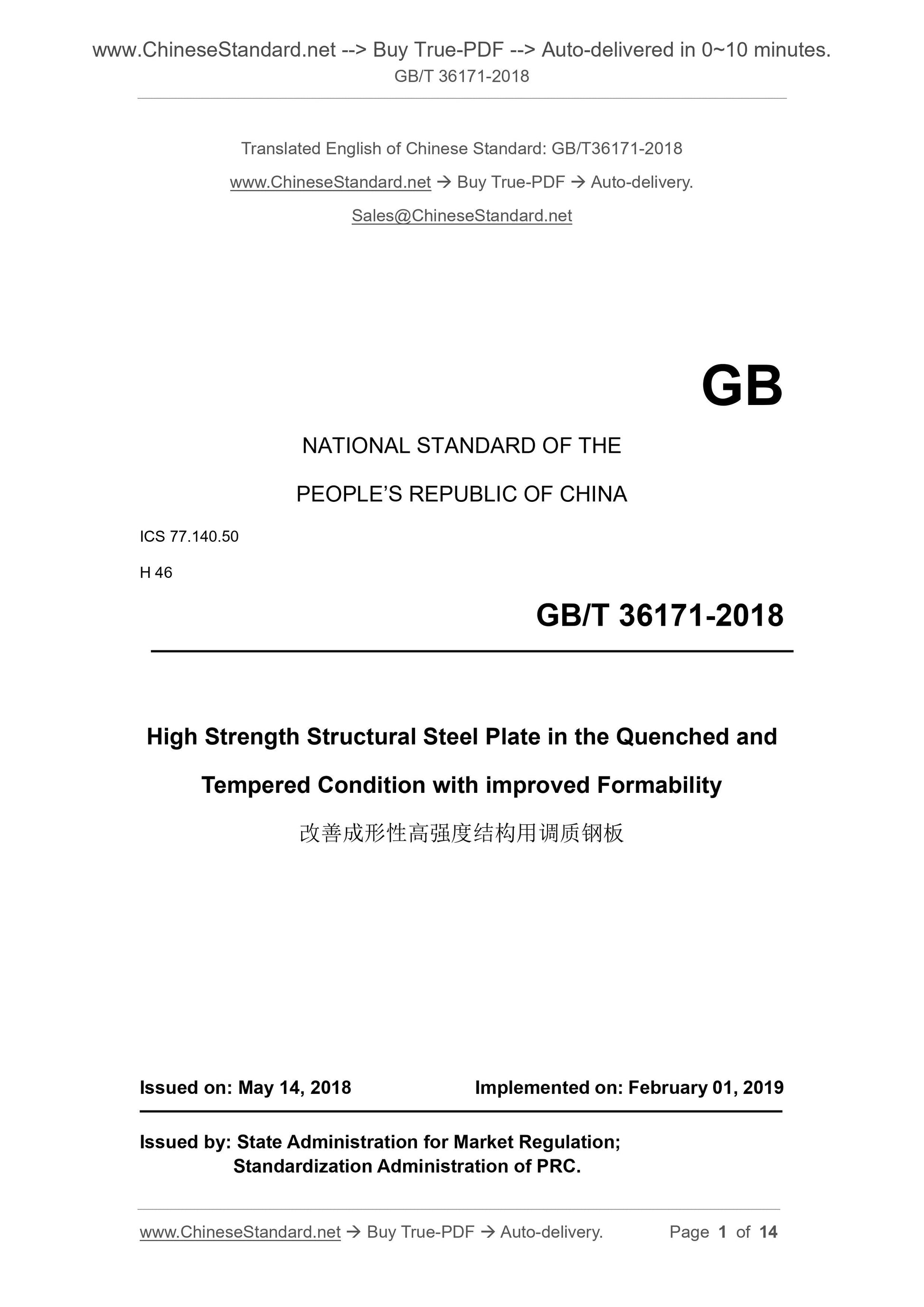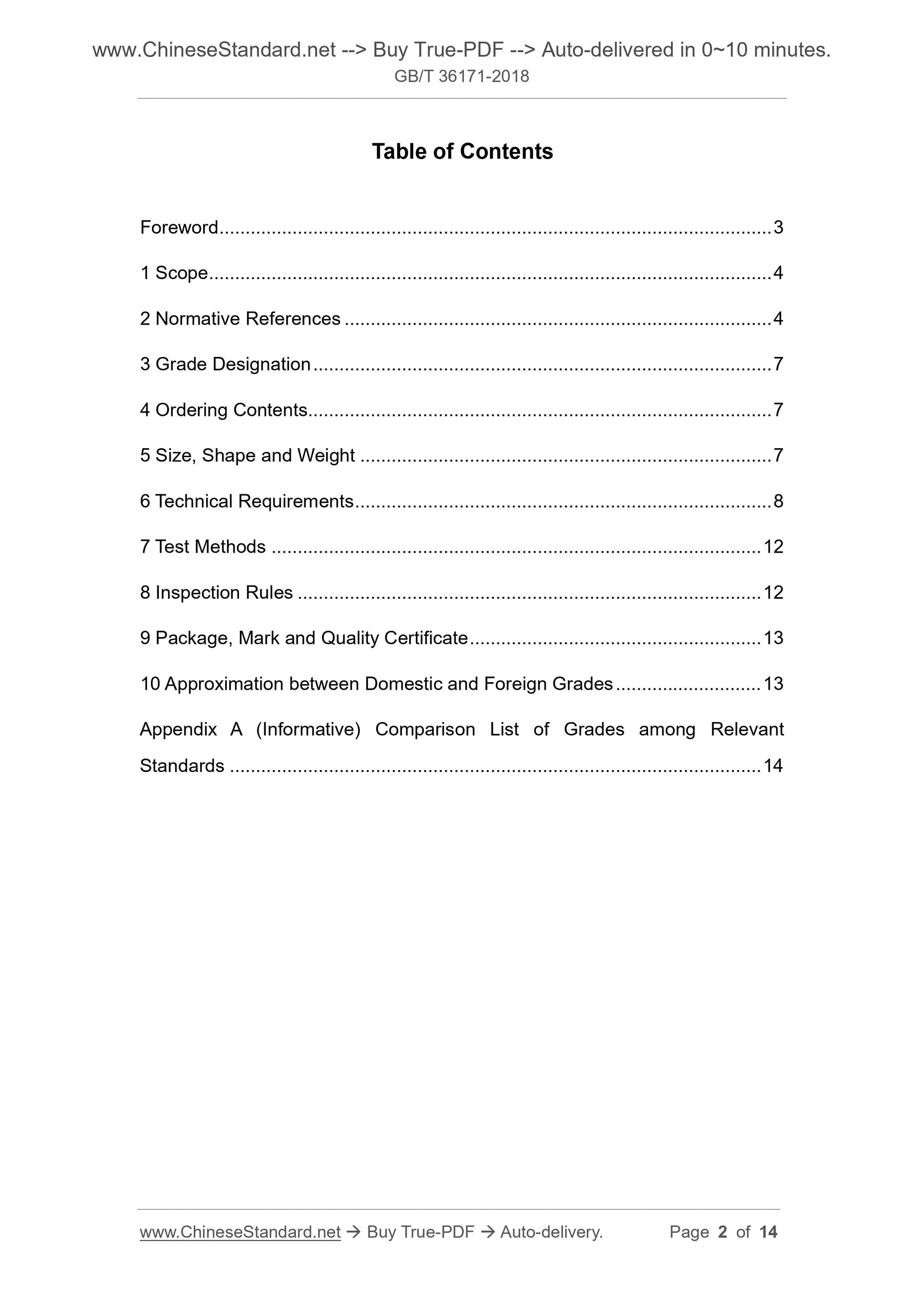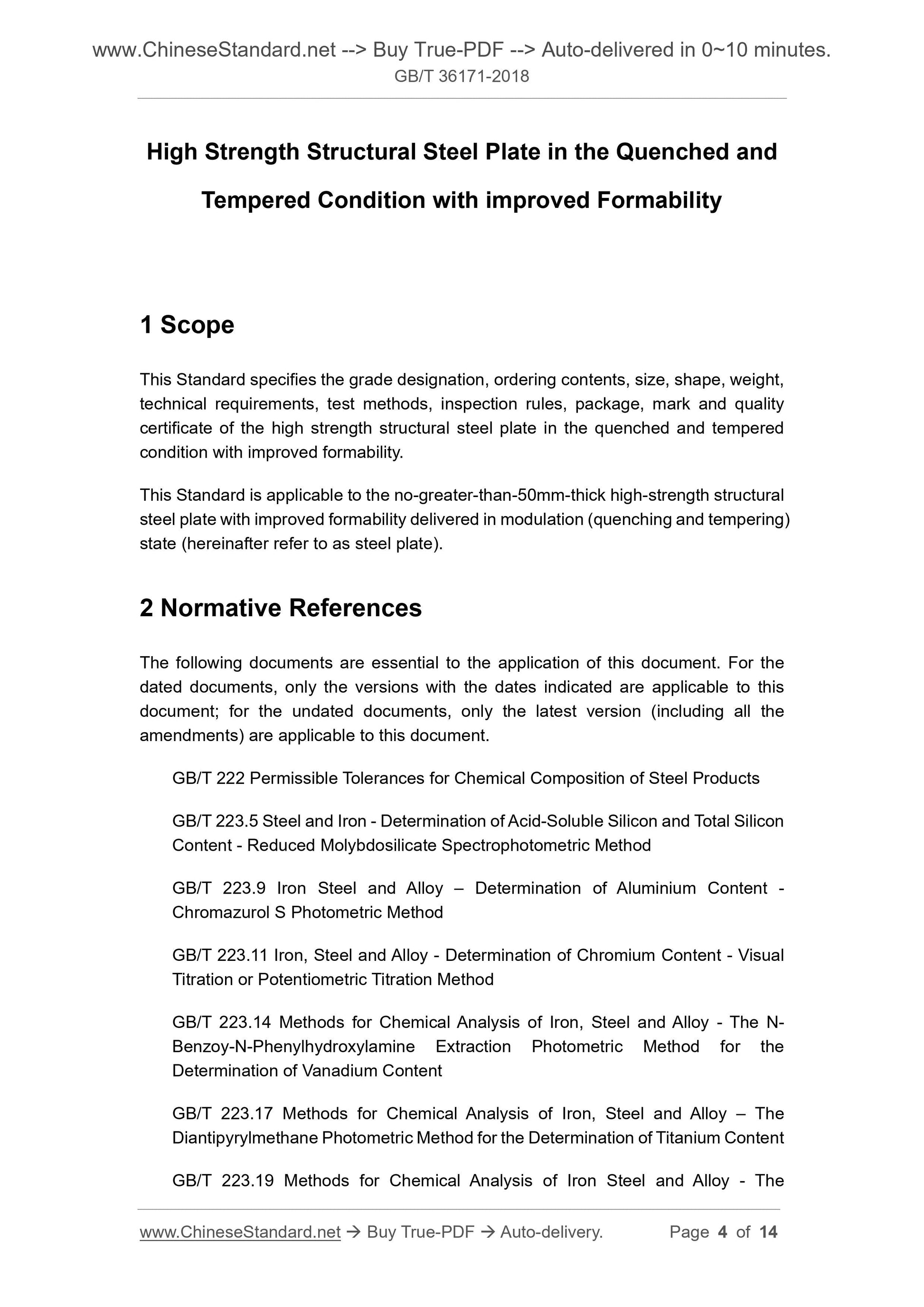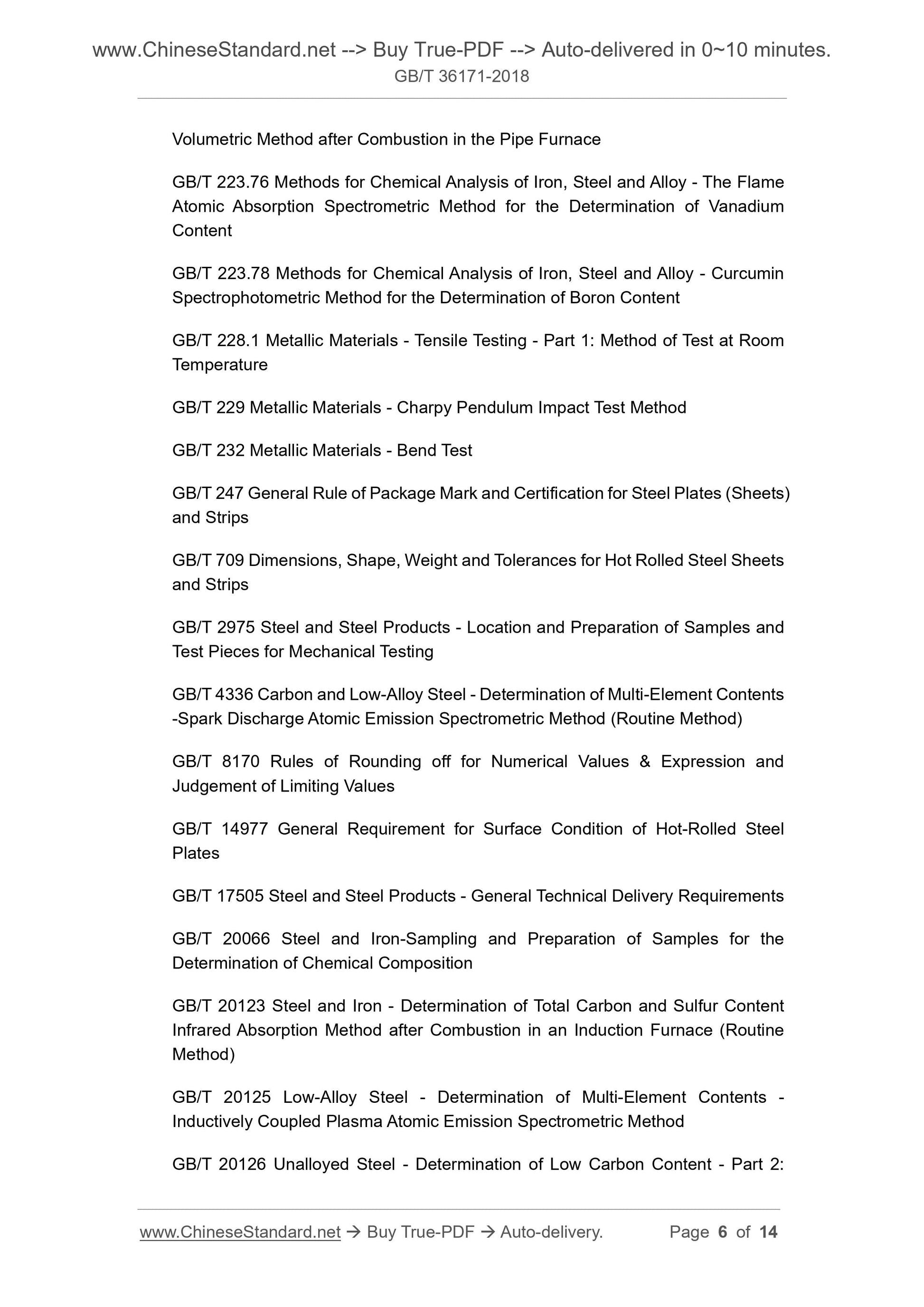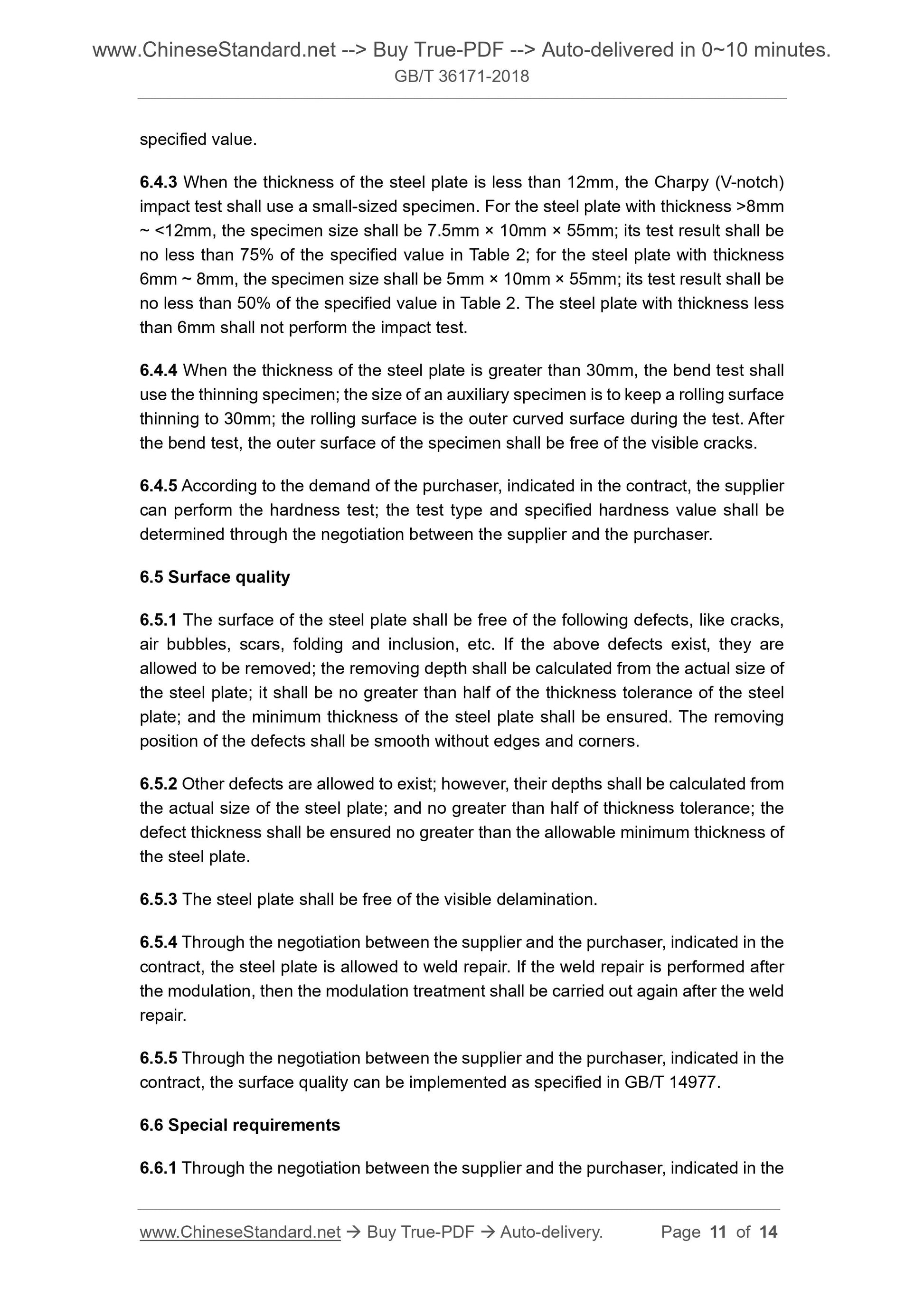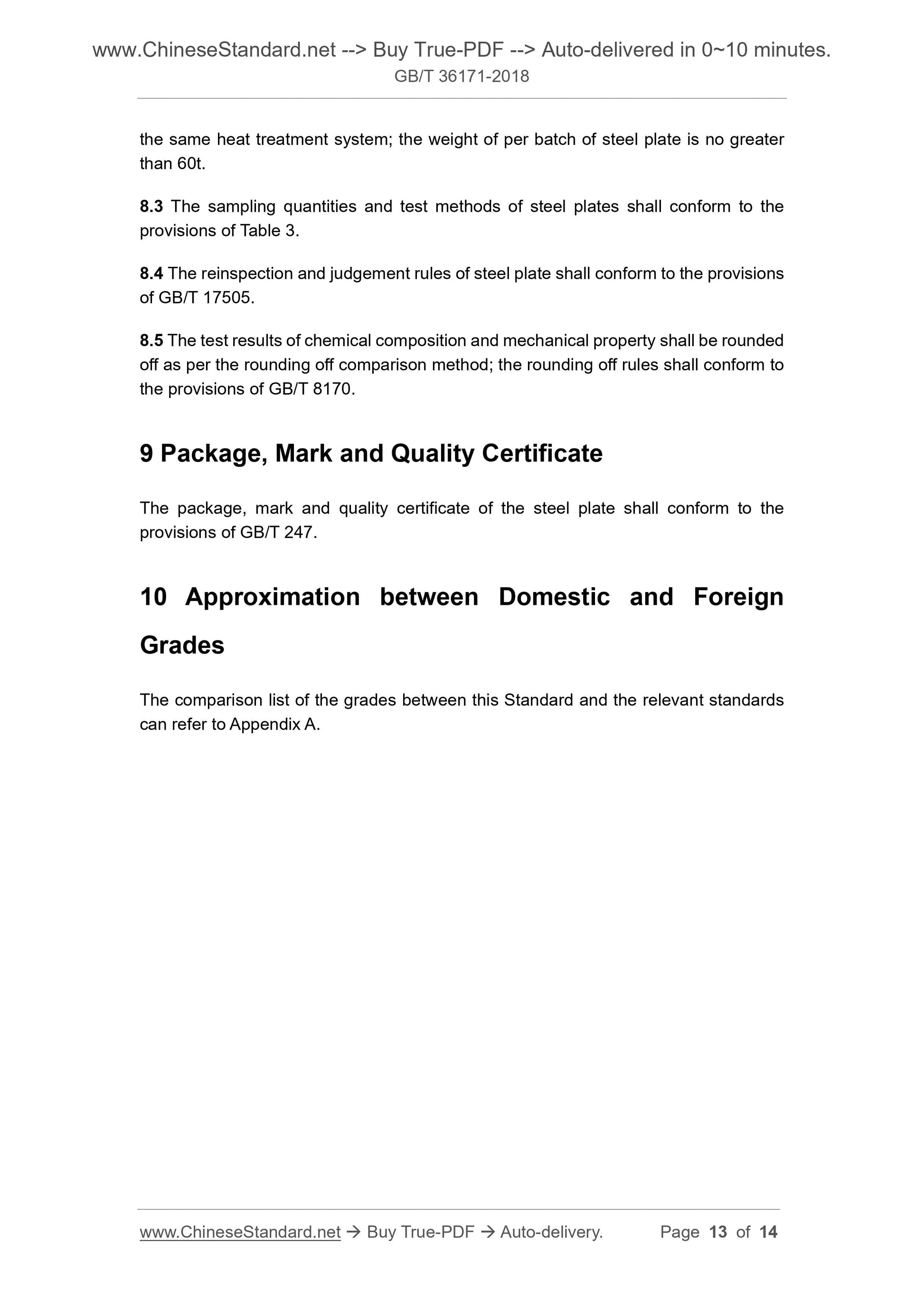1
/
of
6
www.ChineseStandard.us -- Field Test Asia Pte. Ltd.
GB/T 36171-2018 English PDF (GB/T36171-2018)
GB/T 36171-2018 English PDF (GB/T36171-2018)
Regular price
$150.00
Regular price
Sale price
$150.00
Unit price
/
per
Shipping calculated at checkout.
Couldn't load pickup availability
GB/T 36171-2018: High Strength Structural Steel Plate in the Quenched and Tempered Condition with improved Formability
Delivery: 9 seconds. Download (and Email) true-PDF + Invoice.Get Quotation: Click GB/T 36171-2018 (Self-service in 1-minute)
Newer / historical versions: GB/T 36171-2018
Preview True-PDF
Scope
This Standard specifies the grade designation, ordering contents, size, shape, weight,technical requirements, test methods, inspection rules, package, mark and quality
certificate of the high strength structural steel plate in the quenched and tempered
condition with improved formability.
This Standard is applicable to the no-greater-than-50mm-thick high-strength structural
steel plate with improved formability delivered in modulation (quenching and tempering)
state (hereinafter refer to as steel plate).
Basic Data
| Standard ID | GB/T 36171-2018 (GB/T36171-2018) |
| Description (Translated English) | High Strength Structural Steel Plate in the Quenched and Tempered Condition with improved Formability |
| Sector / Industry | National Standard (Recommended) |
| Classification of Chinese Standard | H46 |
| Classification of International Standard | 77.140.50 |
| Word Count Estimation | 9,935 |
| Date of Issue | 2018-05-14 |
| Date of Implementation | 2019-02-01 |
| Regulation (derived from) | National Standards Announcement No. 6 of 2018 |
| Issuing agency(ies) | State Administration for Market Regulation, China National Standardization Administration |
Share
